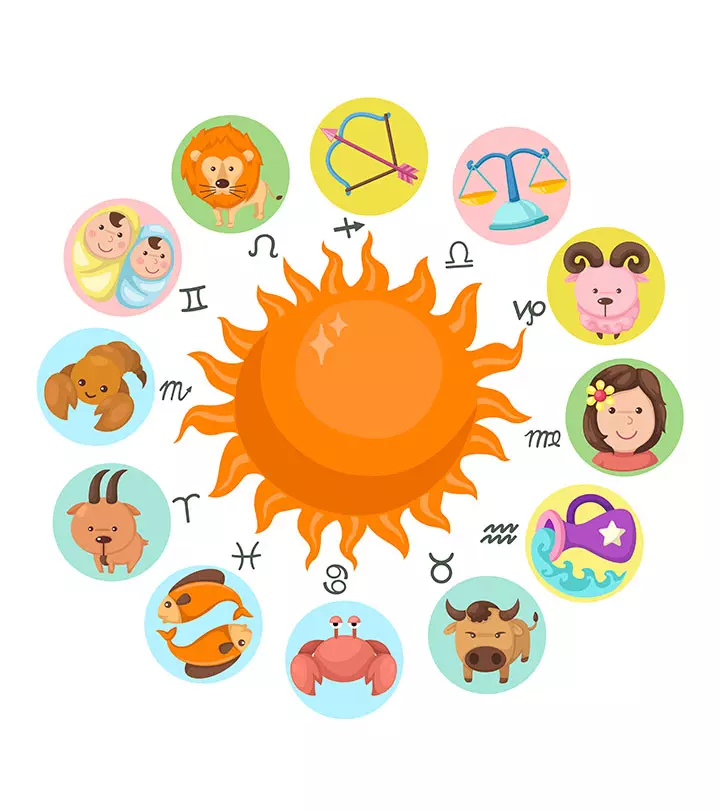
Image: Shutterstock
The pressure to get back into shape after having a baby is REAL! With so many fitness trends being the talk of the town, it definitely feels like something you can try out. You might have noticed many mothers getting back into the best shape post-delivery, and let it motivate you to get on that fitness journey too. If you have always been a fairly active person who works out at least four times a week, this trend is the one for you. Like many fitness enthusiasts and new mothers, we bet you will be super excited to get back to the game and grind.

Make sure you do ample research and regularly consult your doctor because you need safe and correct instructions to go through this fitness regime that is suitable for postpartum women. Obviously, no one would want any complications — physical or mental. That’s why this excellent technique of belly binding might be the one for your recovering body. It’s a traditional approach used in several parts of the world to assist the postpartum body in recovering. It was something you can experiment with and learn from, so take a look at the following info that will sustain your beautiful body perfectly if you ever decide to try it out:
What Is Belly Binding?
Before we get into it, let’s look at what belly binding really is. Belly binding is a process of tightly wrapping a material, usually cloth, around the abdomen. It is an age-old traditional technique to ensure support and keep your abdomen in place. Belly binding can increase core strength and flexibility, helping the stomach heal better after childbirth (1). Back in the day, belly binding happened only with cloth (mostly cotton), but now, different materials and blends are available in the market. The most recommended fabric is the muslin cloth. Make sure to tie it tightly in order to give the required support. It will help keep your beat-up body in place and begin healing slowly.
What Is The Best Kind Of Bind?
You can find different types of binds, but before choosing the one that’s suitable for you, consult a medical professional. They will be able to guide you and help you pick one that is best for you. The thing that many women struggle with the most is trying to pee with a belly bind on because they chose the one that does not open at the bottom. It can be a challenging time for many, and with the pelvic pain, backaches, and recovering abdomen and bladder, there was a lot of frustration. If you are a sucker for functionality and fast fittings, go for corset-shaped binds. It will make your life much easier and convenient. Not only is it fluid to wear and remove, it is obviously not time-consuming at all. And that would be a blessing for working mothers with other responsibilities.
Does It Work The Same Way For Normal and C-Section Delivery?

Image: Shutterstock
It is natural for some women to feel uneasy about putting their bodies through exertion after giving birth. Especially if they have had a C-section delivery. For women who have gone through normal vaginal delivery, the healing period is relatively shorter. However, cesarean surgeries leave multiple incisions under your belly. Since your skin around that area is disfigured, belly binding is highly recommended to restore your smoothly lined skin. It will definitely take more time to heal all the scars, but it is very effective. The discomfort that comes with the stitches and pangs of pain can be stabilized with abdominal binding (https://www.researchgate.net/publication/314102718_Randomized_controlled_trial_of_abdominal_binders_for_postoperative_pain_distress_and_blood_loss_after_cesarean_delivery). Whereas, it is okay if you don’t rely too much on binding if you have had a normal delivery unless you have had other complications. Having said that, it does not mean it won’t work at all. The risk factor is much less.
When Should You Do It?

Image: IStock
After a lot of research and understanding when to do it, you might come across various platforms on the internet where women swear by belly binding. Not only do they share different tips and tricks on how to make it work, but you will also get second-hand experience tales that will prepare you for possible side effects or unwanted problems. You can take all those suggestions and points to your doctor if you are having second thoughts.
For example, you will find pictures of several women showing off their flat tummies, and it will surprise you to see how effective the results were. It will almost be like, “What baby? You had a baby?”. But you will also come across some women who said that their core felt stronger, but they still had their pregnancy weight. After tons of reading and understanding, you can try it and enjoy the terrific results. But it’s also worth mentioning that belly binding is not sufficient to lose weight. It only helps to tighten and strengthen your core. Combined with exercise, adequate sleep, sufficient water, and a healthy and nutritious diet, belly binding is excellent. But unless you take on your postpartum recovery holistically, you cannot expect to see any effective results.
Some Other Benefits

Image: IStock
Since you had a baby who was growing in size inside you, the organs in your body were pushed to the side and your skin was stretched for nine long months. So after you deliver your baby, your pelvis muscles become greatly relaxed and loose. You might have heard of women post-pregnancy, who have difficulty controlling their urine because of that. That’s when belly binding can come in to tighten the stretched pelvic muscles. It also applies to your detached belly muscles that need to repair from the shock of delivery, whether it is vaginal or cesarean delivery.
Consider all the possible factors and speak to your doctor before practicing this technique. Even though it is making all the rounds in mom’s world, make sure you do not overdo it to the point that it starts giving you digestive and gastric issues. Are you willing to give it a try? Share your thoughts in the comment section below!
References
- The impact of exercise therapy and abdominal binding in the management of diastasis recti abdominis in the early post-partum period: a pilot randomized controlled trial
https://www.researchgate.net/publication/336758724_The_impact_of_exercise_therapy_and_abdominal_binding_in_the_management_of_diastasis_recti_abdominis_in_the_early_post-partum_period_a_pilot_randomized_controlled_trial - Randomized controlled trial of abdominal binders for postoperative pain, distress, and blood loss after cesarean delivery
https://www.researchgate.net/publication/314102718_Randomized_controlled_trial_of_abdominal_binders_for_postoperative_pain_distress_and_blood_loss_after_cesarean_delivery
Community Experiences
Join the conversation and become a part of our nurturing community! Share your stories, experiences, and insights to connect with fellow parents.












